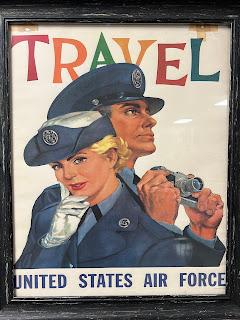Dayton Day
Dayton Day
So one of my best friend’s daughters (who is also a great friend) was getting married just outside Cincinnati and Kathy and I were all set to attend. We were going to fly and meet in Cincinnati, Kathy from our Colorado home and me from Key West. We had planned to arrive early so that we could spend some quality time with our friends before the wedding frenzy really got underway.
Well ,you know what they say about the best laid plans. First Kathy had to cancel due to some issues at our Colorado house she needed to be there to address and then both parents of the bride were diagnosed with Covid. What that meant was that I flew up to Cincinnati and was basically on my own for a couple of days before the wedding stuff started.
Thankfully I am well-versed in finding stuff to do in new places, in fact I sort of relish the opportunity to explore new surroundings and see what there is to do in the vicinity. I was looking for interesting things to do and realized that the city of Dayton, Ohio was only a short drive north and for years I have wanted to make a return visit to the National Museum of the United States Air Force at Wright Patterson AFB just outside of Dayton.
When I was much, much younger, probably between the ages of 6-8 or so, my father would drive the family from Indianapolis to Oil City, Pennsylvania where my maternal grandmother was residing. Almost always, we would stop at Wright Patterson to check out the museum which then as now featured one of the greatest collections of aircraft in the world on display.
I am sure much has changed from those long-ago visits, but what has not changed is the awe-inspiring collection that is on display. The NMUSAF is the oldest and largest military aviation museum in the world, with more than 360 aircraft and missles on display. The museum's collection contains many rare aircraft of historical or technological importance, and various memorabilia and artifacts from the history and development of aviation. Among them is the Apollo 15 Command Module Endeavour which orbited the Moon 74 times in 1971, one of four surviving Convair B-36 Peacemakers, the only surviving North American XB-70 Valkyrie and Bockscar—the Boeing B-29 Superfortress that dropped the Fat Man atomic bomb on Nagasaki during the last days of World War II.
The museum has several Presidential aircraft, including those used by Franklin D. Roosevelt, Harry Truman and Dwight D. Eisenhower. The centerpiece of the presidential aircraft collection is SAM 26000, a modified Boeing 707 known as a VC-137C, used regularly by presidents John F. Kennedy, Lyndon B. Johnson and Richard Nixon. This aircraft took President and Mrs. Kennedy to Dallas on 22 November 1963—the day of the President's assassination. Vice President Johnson was sworn in as president aboard it shortly after the assassination, and the aircraft then carried Kennedy's body back to Washington.
Located just up the street from Wright Patterson AFB is Huffman Prairie and it is the location where the Wright Brothers developed the earliest aircrafts and trained themselves to be pilots. The Wrights began using Huffman Prairie in 1904 with the permission of the field's owner, Dayton banker Torrence Huffman. It was located near an interurban trolley stop called Simms Station, 8 miles outside the brothers' hometown of Dayton. In April, they started testing their Wright Flyer II.
The Wrights made about 150 flights at the field in 1904–1905, leading to development of the 1905 Wright Flyer III, which they considered to be the first practical airplane. This aircraft has been restored, and is now displayed at the Carillon Historical Park in Dayton. After visiting the field and Wright Brothers memorial, I went to Carillion Historical Park to see the plane itself.
In 1910, the Wright Company placed its testing operations at Huffman Prairie Flying Field; the Wright Company also operated its Wright Flying School on the site. Through the Flying School, the Wright Company trained more than a hundred pilots, including the aviators for the Wright Exhibition Team and early military aviators, including Henry H. "Hap" Arnold and Thomas DeWitt Milling. The United States Army Signal Corps purchased the field in 1917 and renamed it, along with 2,000 adjacent acres, Wilbur Wright Field. In 1948 the area was merged with nearby Patterson Field to become Wright-Patterson Air Force Base.
My visit to Dayton wasn’t all about aviation, I also visited the home and museum dedicated to Poet Paul Lawrence Dunbar in Dayton. Dunbar was a contemporary and friend of the Wright Brothers and achieved a massive amount of public acclaim for his writings. The son of a former slave, Dunbar purchased the house for his mother in a quiet neighborhood in Dayton and moved there himself after separating from his wife. He died in the house from Tuberculosis in 1906 and the house was later purchased by the state of Ohio and made the first state memorial to an African- American.














































0 Comments:
Post a Comment
<< Home